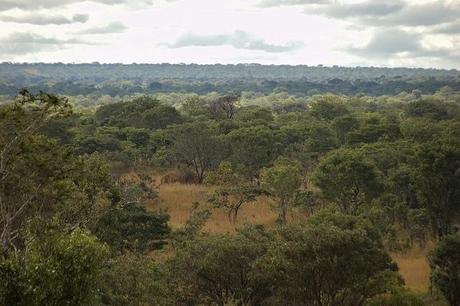
by Thomas Hubert / Center for International Forestry Research
The recent surge in Chinese investment in Africa has exposed the need for local policymakers to boost regulation and administrative capacity if they are to manage their forests and other natural resources sustainably, a recent study of Zambia shows.
The study, conducted by scientists with the Center for International Forestry Research (CIFOR), sought to assess the developmental implications of China’s increasingly prominent economic and political role in Zambia.
The southern African country proved a useful place for such a study, thanks to its long and diverse history of relations with Beijing — from the completion of the 1,860-kilometer Tanzania-Zambia railway in 1975 (then China’s largest-ever construction project in Africa), to the 2011 election of President Michael Sata, who opposed terms seen as too favorable to Chinese firms operating in Zambia.
“I have noticed over the years the Chinese move across scales, starting by buying a few logs of timber and moving on to bigger operations,” said Zambia-based CIFOR researcher Davison Gumbo, a co-author of the study.
Much of the involvement by Chinese companies, financial institutions and state agencies in the past 15 years has focused on mining, targeting Zambia’s rich copper and cobalt deposits.
The study details hundreds of millions of dollars in investments by China’s state-owned firm Non Ferrous Company Africa (NFCA) in Zambian mining concessions, copper smelters and infrastructure developments.
In addition to providing a pattern of international investor and government behavior in the wider natural resources sector, Gumbo said the focus on minerals was also relevant to forest management in its own right, he said: “A key driver of deforestation is mining, and it is driven by Chinese investment.”
Gumbo explained that beyond the space directly affected by open pits and associated infrastructure, indirect impacts of mining on forests made it the largest cause of forest loss in Zambia. “Mining areas have limited energy supply for low-income labor, and people go out and buy charcoal, which impacts surrounding areas. Miners also look for small land plots to grow cassava or maize, and they encroach on forests,” he said.
Soaring Chinese investment in the early 2000s coincided with the introduction of tax breaks for international investors and incentives for the mining sector, including “development agreements” dividing royalties on minerals by five for new entrants.
Opposition parties and civil society began to protest that the government was not capturing sufficient revenues from Zambia’s most valuable resources, while investors made record profits, leading to the 2011 election backlash, the scientists noted.
The development of a special economic zone with new tax incentives, largely occupied by NFCA and its Chinese partners companies, “runs the risk of becoming a virtual economic enclave” or “a ‘spatial fix’ of foreign capital (and perhaps even cultural) accumulation,” the researchers wrote.
NEED FOR POLICY ENFORCEMENT
Despite those risks, and a widespread Zambian perception that Chinese employers offer tougher working conditions than others, CIFOR’s researchers found “little concrete evidence to support claims that Chinese companies are more negligent of labor rights and health and safety than other companies.”
“Preliminary findings from this scoping report give no reason to suggest that such investments are likely to be more or less sustainable than investments originating from other countries,” they concluded, noting that easier access to capital had helped Chinese companies maintain activity and employment throughout the global financial crisis.
Yet the sheer scale of Chinese investment, the massive conditional loans that accompany Beijing’s support for public infrastructure projects and China’s increasing presence in other natural resources sectors such as logging and agriculture illustrates the need for African states like Zambia to become better equipped to deal with powerful international partners.
“The major point is policy enforcement,” Gumbo said. “When there is no enforcement by government, people do as they see fit. With a higher level of enforcement, government would realize more revenues.”
In 2011, new legislation established the Zambia Environment Management Agency (ZEMA), which seeks environmental impact assessments from investors before industrial projects and monitor their implementation. Although the authors noted that ZEMA employs only 40 inspectors nationwide and pointed to “significant loopholes in the legislation governing environmental impacts of large-scale commercial operations in Zambia,” the authorities’ emerging environmental awareness in the face of mining growth offers potential for better forest management, Gumbo said.
“ZEMA is now getting involved, questioning management plans, narrowing what forestry can do without respecting environment assessment requirements.”
For more information about the topics of this research, please contact Davison Gumbo at [email protected].
This research forms part of the CGIAR Research Program on Forests, Trees and Agroforestry.

